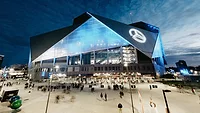Driving Cutting-edge Protection

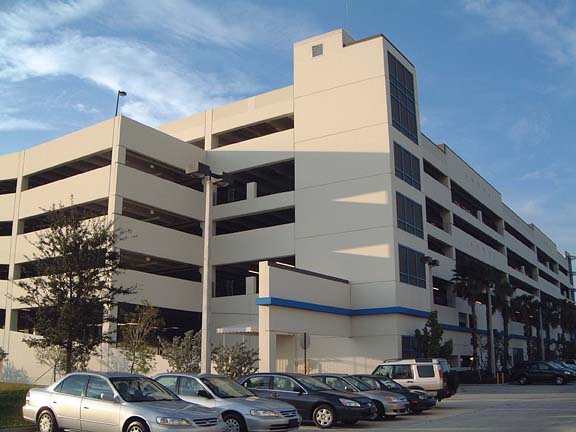
Located just outside Miami, visitors often marvel at its size. The new six-floor parking garage rises in stylish white above the surrounding palm trees. The 500,000-sq. foot garage holds rows and rows of gleaming new Hondas, plus the personal vehicles of more than 300 employees.
Along with all those cars are some odd features such as a County Clerk’s office, where shoppers can obtain a marriage certificate, or, more likely, pull their driving history. Also on site is a discount gas station and car wash, services offered to customers through the Rick Case Rewards loyalty program.
Quietly working behind the scenes, a sophisticated access control system tracks every new Honda moving in and out of the parking garage. It follows every set of keys, every employee vehicle, every elevator trip, every gas fill-up and every car wash. In short, it makes sure this mega-dealership runs mega-smoothly.
The access control system and parking garage it protects are testaments to the incredible success of the business. Rick and Rita Case opened this location in early 2002 as a 350-car lot, the latest in a collection of fourteen dealerships ranging from Ohio to Florida. In just one month of operation, the dealership became the number-one volume dealer in all of Florida.
Rick and Rita Case are a phenomenon in car sales – equal-measure entrepreneurs and philanthropists, with an unwavering sense of good business. When the new dealership started selling over 1,000 vehicles a month, the Cases knew it was time to get bigger – much bigger. In late 2002, they began plans to make the Davie dealership into their flagship operation, with the grand re-opening targeted for November 2003.
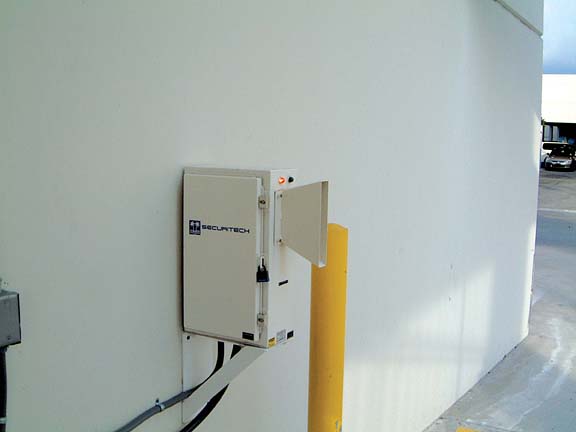
Advance tracking
The original expansion plans did not include an access control system; the main deterrent to unauthorized entry would be a fence surrounding the 10-acre property. But through the design and construction process, it became clear that an advanced tracking system was needed. The owners made finding the right access control system an urgent priority.The Cases and their team first identified critical needs for securing the parking garage. The primary goal: track new vehicles from the time they arrived until they were finally driven away by customers. Accountability for the salespeople was also an issue. Who was the last salesperson driving a particular car? How much gas had been issued to that car? Had the car been returned to the garage? The new system would need to answer all of these questions.
The Case team also wanted to track employee parking, to be designated around the garage floor perimeters. “Before the garage, employees had to hope they’d find a space when they got to work,” says Bill Sanders, building team project manager. “We wanted to assure them a guaranteed spot, give them the perk of easy parking.”
Another goal was to prevent unauthorized individuals from entering the facility. This required securing the car ramp, two stairwells and two elevators that connect each floor of the garage. “We have a big thing about keeping [unauthorized people] out of the building,” Sanders explained. “We don’t want them going up there and getting injured or vandalizing cars.”
Finally, the project team wanted to improve security around new vehicle key sets. The keys are expensive, with electronic coding making each set worth about $300. A special key-storage cabinet held the keys in an office of the main building. But the office was too easy to access, with employees often gathering there for breaks and conversation.
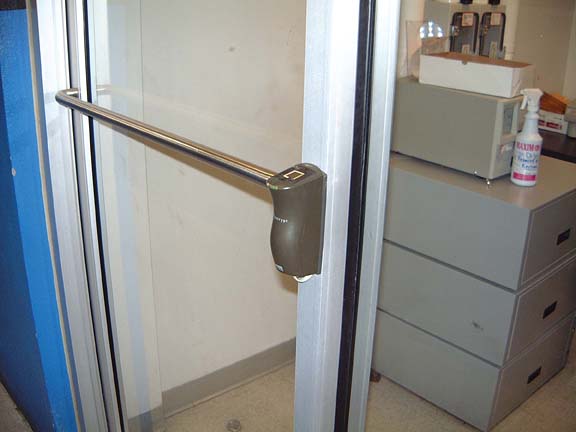
Access challenge
To find an access control professional capable of meeting the challenges of the new garage, the Cases and their project team looked to other high-end dealers for references. As Sanders put it, “you’re buying more than a system. The system is only as good as the people who install it.” One recommendation came from The Collection, a high-line dealer of Ferrari, Maserati and other luxury brands. The Collection had used Glanz Technologies of North Miami, Fla. to design and install their facility’s system.Mark Glanz started Glanz Technologies in 1981, and now employs more than 20 technicians, installers and project managers. The company specializes in integrated access control and security systems, which bring together multiple functions such as badging, video cameras, security and time and attendance. The company had provided services to clients large and small, but time constraints made Rick Case Honda one of their toughest jobs ever.
“From the contract signing to the grand opening deadline was only three weeks,” said Glanz. “It was a tremendous task, one of the biggest we’ve had to handle.” Further complicating matters was the fact that the garage was still being built. Electricity, drywall, cement, asphalt, core drilling, elevators – all would be affected by the access system installation.
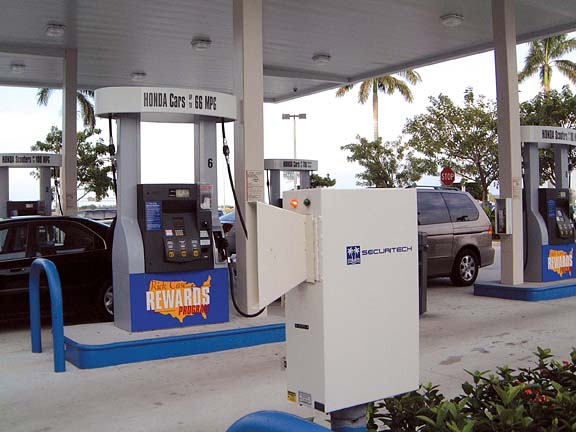
The flexibility of the system also inspired additional design changes that were incorporated as work progressed. Originally, a separate system administered the gas station and car wash. The new system offered the possibility of integrating both, with improved tracking and monitoring as the result.
As expected, installation proved to be a massive undertaking. At first, it took six to ten workers just to pull the cable necessary for the system. Glanz used his own employees, not sub-contractors, to ensure a quality job. Conduits had to be buried between the main building, the garage and the gas station area. Holes had to be cut into concrete for readers, cameras and other equipment.
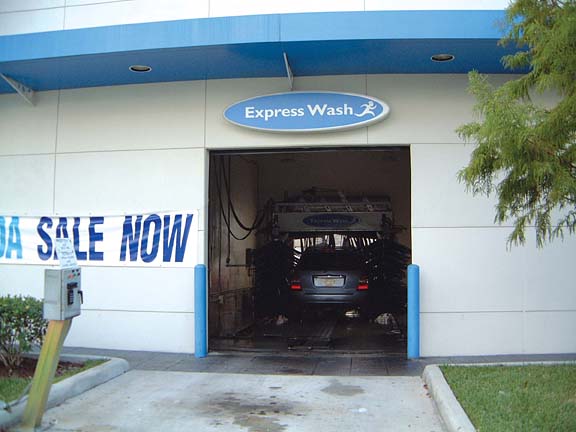
Remote workstations
On the software side, Glanz installed a Dell PowerEdge 400 server into the dealership’s server room to run the Microsoft SQL Server database. System Galaxy software was installed on eight other workstations around the facility, all tapped into the same central database. Dual-technology badges, with proximity and magnetic stripe functions on the same card, were issued to each of the dealership’s employees.To monitor movement of new Hondas, Glanz installed long-distance barcode readers from Winter Springs, Fla.-based Barcode Automation Inc. at the entrance and exit of the garage car ramp. When a new vehicle would come off the delivery trailer, a barcode label would be affixed to the vehicle’s rear side window and assigned to the car in System Galaxy. As the vehicle would drive by the entrance or exit reader, the reader would scan that barcode label to track vehicles.
Barcode labels also solved the problem of employee parking. Each employee was issued a barcode label for his or her personal vehicle – or two labels, if the employee might drive a different car to work on certain days. The employees were also given assigned parking spots within the garage, while the dealership would store a complete dossier of each employee’s vehicles – make, model and license plate number. “If someone is in your spot,” noted Sanders, “you take down the license plate number, and we can look it up.”
To prevent unauthorized entry or exit of vehicles, the barcode readers work together with Irvine, Calif.-based HID Maxi-Prox readers to control a roll-up gate and traffic arm at the entrance and exit of the car ramp. The roll-up gate is held open during peak traffic periods of the day, when most employees arrive or leave. During the rest of the day, the gate rolls up and the traffic-arm lifts when triggered by the correct pairing of a car’s barcode scan and an employee’s authorized proximity card. As Glanz describes, “the system is unique from the point of view that we adapted the ‘two-person’ rule to fit a car and a driver.” Thus, only a person carrying an authorized card can use the garage’s access ramp for a new Honda or personal vehicle.
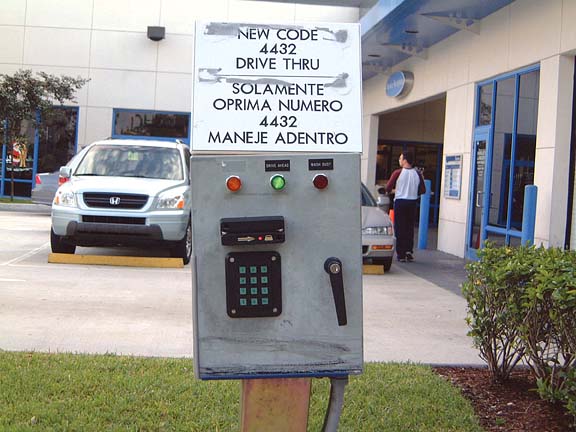
Controlling entrances
To block unauthorized pedestrians, Glanz secured the stairwells and elevators with HID Mini-Prox readers. No card is necessary to ride an elevator from an upper floor to the ground floor, but any other access to the floors is restricted. An employee has to present his or her proximity card at the elevator’s reader in order to select a floor number, and then is only allowed to select certain assigned floors.Glanz upgraded the security around the vehicle keys by adding a Bioscrypt (Van Nuys, Calif.) VeriProx fingerprint reader to the office door. “That was a room the Cases wanted at a higher level of security,” he explains. A Panasonic (Secaucus, N.J.) WVCP-244 color video camera was installed outside the office door and connected into a DVR from Integral Technologies of Indianapolis. The DVR integrates with System Galaxy so that activity from the access control system triggers the device to begin recording. The system captures images of each person using the office door, and the images can be retrieved by clicking on the door event record in the program.
A bank-style tube system connects the garage and main office, where the keys are kept. A salesperson needing a set of keys for an Accord, for example, uses an intercom from the garage to request that set of keys. He or she then sends over a badge to be scanned and recorded by the key teller. The Accord keys and the badge are sent back to the salesperson through the tube.
The gas station proved to be the most complicated piece of the system puzzle. Specific fire regulations for explosive-proof equipment applied to the two 12,000 gallon tanks. Communication between the pump system and System Galaxy took extra coordination, with the software provider writing a custom interface.
To address the mix of needs at the pump, including the rewards program, Glanz installed another distance barcode reader to read the labels of dealership cars and returning customers. “Every time a car goes through with a barcode, it enables the pump and attaches the record,” said Glanz.
In addition to the car label, two types of magnetic stripe cards are used at the gas station: employee badges and customer reward cards. The reward cards are simple magnetic stripe cards issued to the dealership’s customers. As the customer returns for oil changes, gas fill-ups and other services, the card accumulates reward points that can be redeemed for future purchases of vehicles, parts and services. The same card allows free washes for life at the car wash.
Employees, on the other hand, need to use the gas station to fuel the new Hondas. When an employee presents the magnetic stripe on their badge at the gas station, the cost for the fuel is recorded toward the expense report of the new Honda being filled.
To support records generated by the readers, Glanz captures digital images of pump activity with Panasonic WVCF-224 mini-dome video cameras mounted around the station. The cameras are connected to the DVR through the Galaxy program, and are programmed to record continuously.
Another benefit of the system is the creation of three different records for access events – a barcode record from the car, an employee badge record and a digital video image. “It’s secure,” assured Sanders. “Is it impenetrable? No. But our purpose was to keep someone from driving out with a car without our knowledge.” There is increased accountability for the sales people as well. “If we do a random security check, we know who had the keys last,” said Sanders. “If the car is damaged, we know who damaged the car.”
Finally, even Glanz and his company have reaped benefits from the system, as Honda dignitaries and car dealers of all sorts make pilgrimages to the now-famous site. As Glanz put it, “The Cases told us they would showcase our system to people from around the world, and true to their word, that’s what they have done.” For Rick and Rita Case and their company, honoring partnerships is just part of doing business – and business is booming.
Looking for a reprint of this article?
From high-res PDFs to custom plaques, order your copy today!




